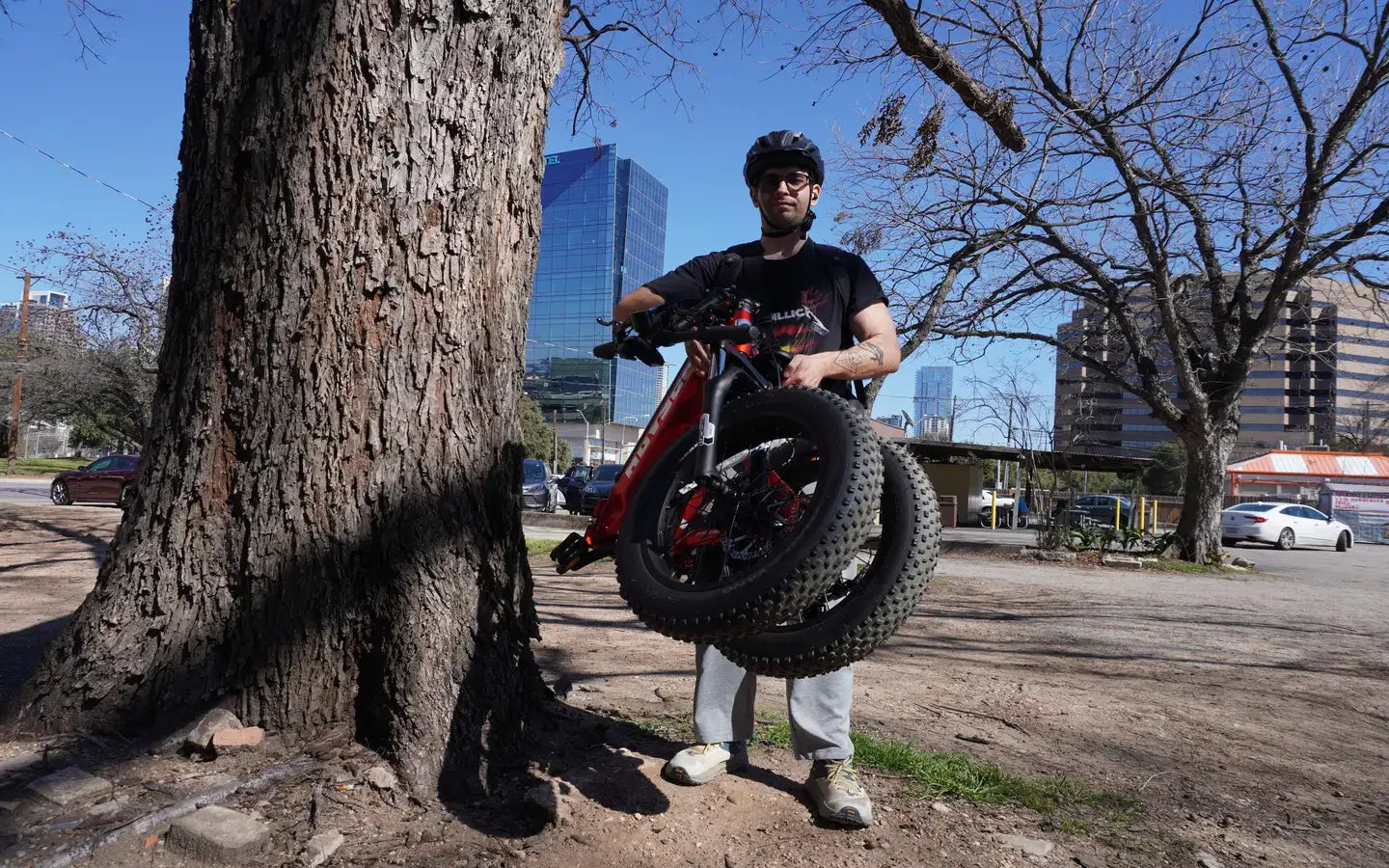
- by LiuJiazhu
Which Electric Mountain Bike Is Best For Steep Trail Climbing?
- by LiuJiazhu
For steep trail climbing, the best electric mountain bikes prioritize high-torque motors (80+ Nm), durable mid-drive systems, aggressive geometry, and long-range batteries (750Wh+). Key models include the Specialized Turbo Levo SL (90Nm motor), Trek Rail 9.8 (85Nm), and HOVSCO Hv200 (100Nm mid-drive). These bikes optimize power delivery, traction control, and suspension responsiveness for technical ascents.
Steep-climbing eMTBs require high torque output and smart power modulation. Mid-drive motors excel by leveraging bike gearing, while torque sensors adjust assistance based on pedal force. Effective weight distribution (40% front/60% rear) prevents wheel slip on >30% gradients.
Technical specifications reveal critical thresholds: Motors below 75Nm struggle on sustained 25%+ inclines, especially with rider+bike weights exceeding 120kg. The Shimano EP8 RS motor delivers 85Nm with 400% tunable assistance, while Bosch Performance Line CX hits 85Nm with 340% support. Pro tip: Prioritize bikes with thermal management systems in motors to prevent overheating during extended climbs. Consider gradient performance like a car's gearbox – higher torque acts like a lower gear ratio, maintaining cadence on steep sections. For example, the HOVSCO Hv200's 100Nm motor climbs 35% grades at 12km/h without overheating.
| Factor | Minimum Requirement | Optimal Range |
|---|---|---|
| Motor Torque | 75Nm | 80-100Nm |
| Battery Capacity | 625Wh | 750-900Wh |
| Suspension Travel | 140mm | 150-170mm |
Mid-drive systems outperform hub motors in climbing efficiency by utilizing the bike's existing gears. This allows maintaining optimal RPM (70-90) across varying gradients, whereas hub motors lose efficiency when cadence drops below 50 RPM on steep inclines.
Bosch's mid-drive motors demonstrate 92% energy efficiency on 20% grades versus hub motors' 78% under identical conditions. The centralized weight distribution lowers the center of gravity, improving traction – crucial when 70% of climbing power comes from the rear wheel. Pro tip: Look for motors with instant engagement technology (response under 100ms) to prevent power lag when tackling sudden elevation changes. Imagine climbing a muddy 30% slope: a mid-drive system behaves like a skilled rock climber using precise footholds, while hub motors resemble someone pulling themselves up by arms alone.
Lockout suspension and anti-squat design are critical for efficient climbing. Full-suspension bikes with 65-67° head tube angles minimize pedal bob while maintaining traction on technical ascents.
Fox Factory 36 GRIP2 forks with climb mode reduce energy loss by 18% compared to open damping. DW-Link and VPP suspension platforms achieve over 90% anti-squat efficiency at sag position, converting 95% of pedal force into forward motion. Pro tip: Adjust rear shock pressure 10-15% higher than descending settings for mixed terrain. Think of suspension as a shock absorber in rally cars – it must balance bump absorption with power transfer. Bikes like the Yeti 160E use Switch Infinity suspension that automatically stiffens during out-of-saddle climbs.
| Suspension Type | Climbing Efficiency | Descending Control |
|---|---|---|
| Hardtail | 98% | 75% |
| Full-Suspension | 88-92% | 95% |
Aggressive tread patterns (2.4-2.6" width) with soft compound rubber maximize grip on loose surfaces. Look for 60-70 TPI casings balancing puncture resistance and weight – crucial when 40% of climbing traction depends on front tire grip.
Maxxis Assegai 29x2.5" tires demonstrate 32% better grip on wet rock compared to all-purpose treads, while Schwalbe Magic Mary's Addix Soft compound increases cornering traction by 28%. Pro tip: Run 18-22 PSI in rear tires for technical climbs – lower pressure increases contact patch but risks pinch flats. Consider tire performance like hiking boots: sticky rubber acts as Vibram soles, while wide spacing between knobs prevents mud clogging, akin to cleat tread depth.
Motor upgrades are generally not recommended due to integrated battery/controller compatibility. Instead, optimize existing systems through firmware updates, lightweight components, and proper gear selection.
How often should climbing-focused eMTBs be serviced?Perform drivetrain cleaning every 100km of steep climbing, motor mount checks every 50 hours, and full suspension rebuilds annually. Saltwater/mud exposure requires immediate post-ride rinsing to prevent corrosion.
Share:
How Can Electric Mountain Bike Batteries Be Properly Maintained?
Which Motor Type Offers Better Hill-climbing Performance?